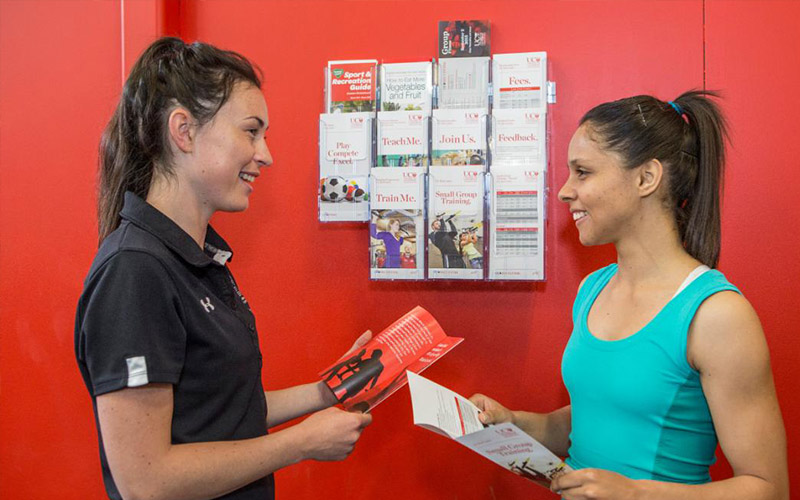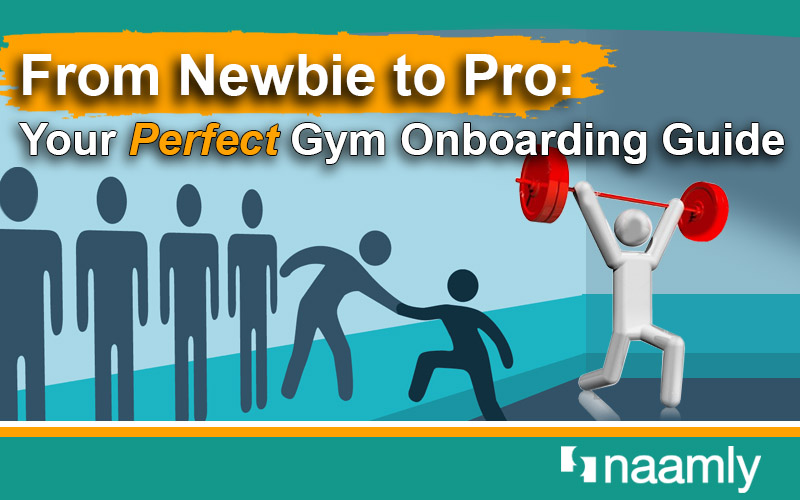Imagine this: You are your gym’s newest member. You signed the agreement and paid the initial fee, and now it’s time to start working out and begin the journey toward meeting your fitness goals.
But no gym employee has offered new member onboarding, so you’re left wondering:
· But what do you do first?
· How do you figure out how to use all the equipment?
· What happens when you feel intimidated by all the stronger, sleeker people in the gym who all seem to know exactly what they’re doing – while you feel like a new kid in the junior-high cafeteria?
Scary situation, huh?

Now imagine employees from the gym that has a system for new member onboarding.
· They’re answering your questions, offering support, and introducing you to other people all around the facility.
· They’re showing you how to work out, how to move safely, and making you feel welcome.
· It’s almost like they’re glad you’re there!
Now ask yourself: Which approach would be most likely to make you want to come back to your gym a second time – and which would make you want to slink out the back door and never return?
Yep. Should be obvious, right?
Gyms that develop and use systems for new member onboarding see dramatic improvements over those that don’t.
When properly onboarded, new members come back to the gym more often, they spend more money, they renew memberships longer, and they achieve greater results – all while telling everyone they know how great your business is.
It’s no wonder that gym owner Doug Spurling says, “Onboarding is by far the most important aspect of the client experience because that’s what kicks things off.” (Get more of Doug’s expert knowledge in our video interview here.)
Indeed, new member onboarding is both an extension of the sales process and an introduction to the power of retention – which is essential to your long-term survival and growth.
Your members are buying more than access to your gym and equipment. If you don’t deliver – STARTING ON DAY 1 and continuing consistently – you’ll lose them to the competitor down the street who will treat them right.
Steps to Consider
So, what goes into a successful system for new member onboarding? Well, there’s no “one size fits all” approach, and the answer for you will depend on factors like: the kind of gym you have, your price point and service level, and typical member goals.
But you generally want to bake in moments like this:
· Welcome Package. New member onboarding starts with providing essential information about the gym, like hours and contact information; a few typical beginning workouts for different types of customers; access to online services; and a guide to perks.
· Initial Consultation. As quickly as possible after the sale, schedule an assessment with one of your coaches. This will be the first – but not the last – conversation between the newbie and the pro about the member’s fitness level, goals, and special considerations.

Measure weight, body fat percentage, and other key indicators using the best tool you have, like an InBody machine. Explain what the numbers mean and how this will help the new member track progress and see success happening.
Don’t speed through this opportunity to connect and establish a real relationship. Learn their vulnerabilities as part of your new member onboarding system. Establish trust. Introduce them to others on staff and people using the gym.
Pro tip: A day before, email a short video from the trainer who will conduct the assessment, personally welcoming the newcomer.
· Tour and First Workout: Give a guided tour of your facility. Share information about services like classes and nutrition coaching, go through the changing room, and point out amenities like the smoothie bar.
Take the newcomer through the first workout, emphasizing safety and discussing – but not hard-selling – your gym’s personal training and small-group sessions. Some up-selling is smart, but don’t turn your new member onboarding into your new member arm-twisting
Again, don’t rush the newcomer. Let her get comfortable. Explain things simply in ways that are relevant to her goals. Introduce her to more people as you go along.
· Tech Support. Does your gym have an app? If so, make sure the newcomer has it downloaded and knows how – and why – to use it. If you use Naamly’s suite of communications tools, go over them, as well. Explain you will be sending a mix of automated and personalized messages.
Show the new member any video trainings you have available online, nutritional tips, and other support. Make sure he knows how to sign up for classes and services.
Pause to ask if he has any questions or concerns.
· Plant Seeds. Give the newcomer information about various things he or she can do in the first few weeks to make sure they’ll come back at least once a week. Studies show this is a key component of new member onboarding in determining long-term success.
Don’t just say, “Hope to see you again soon.” Instead, get him or her committed to an initial class or group training session, or a “lunch and learn” session your nutrition coach is offering, or even a social event you’re planning.
· Communicate, communicate, communicate. Call or text a personal reminder about upcoming visits. Post welcome messages on social media and at relevant spots in your gym. Make sure everyone on staff calls new members by name, every time.

Make note of any special goals, challenges or dates coming up for the member, and share the information with others on the team as part of the new member onboarding.
The Next Level
At this year’s recent IHRSA conference in Los Angeles, new member onboarding was the topic at the very first session. Thousands of fitness professionals from around the world gathered to hear industry leaders coach them on building the best business possible.
Jacob Thomas, owner of Razor Sharp Fitness in Wisconsin, kicked things off talking about new member onboarding.
In his research, Thomas found a statistic that indicates how likely a member will stick with you: Whether they come to your gym at least once a week in the first month. Those who do stay an average of 13 weeks longer than those who don’t.
Get them up to twice a week and they’re more likely to stay an additional year.
During the first few weeks and months especially, it’s important to provide progress reports and show demonstrable results are, he found.
“People now more than ever are looking for results to validate membership,” he said. “If they don’t see results, they’re going to go somewhere else.”
And in addition to traditional motivations like losing weight and gaining strength, fitness consumers now also want the fitness benefits that come in mental health, stress management, sleep, social interaction and confidence.
So, today’s successful gym needs to create systems to develop and measure success in those categories, along with weight and body fat percentage.
Thomas’ research found that “genuine interactions” between staff and new members are crucial. Members who get one in their first few sessions are 20 percent more likely to check in during the next month; 2-3 in a session makes them 50 percent more likely to return; and four or more in one visit means they’re 80 percent more likely to visit the next month.
“The more engagement we have with our members through our employees, the more likely they are to continue to come back,” he said.
These engagements are so important they can even overcome disappointment when results don’t come as quickly as the newbie would like.
And if you can come up with a new member onboarding system that’s really special on its own, then you can sell that as part of your initiation fee. It might even become its own selling point.

A few more pro tips to wrap up:
· Keep those initial assessments and workouts to no more than 45 minutes. You don’t want to overwhelm anyone.
· Make it easy for them to reschedule every interaction. Otherwise, newcomers are more likely to stand you up rather than call and set up another time. Using your tech tools, it should be easy for them to make a change of plans. It shows you respect their time and busy lifestyles.
· Craft a few different tracks for new member onboarding. For instance, newcomers to fitness might need one approach, while a fitness veteran who’s just new to your town needs another. (Don’t assume you can ignore someone who’s comfortable working out.)
· The first four weeks are crucial, but so are the first 90 days, so renew or deepen efforts after the first month. Keep up engagement, communication, and encouragement. When people start to falter in attendance, ask them why – and what you can provide to get them excited again.
· Return to measuring tools like InBody to show progress. It’s hard to see sometimes, and there’s nothing more encouraging than a printout of numbers showing a new member’s efforts are paying off.
Think Like a Host (Because You Are One)
Remember that a gym environment might seem natural and comfortable to you, but for a newcomer it can be intimidating and scary.
So, use empathy in building your onboarding process – not just because it’s the nice thing to do, but because it’s the best thing to do for your business.
You wouldn’t invite neighbors over for dinner and ignore them when they arrive, point at the fridge, and hand them the TV remote, would you?

>New member onboarding is just one step in retention. Learn more about keeping members for the long haul here with our free guide 9 Secrets to Increase Retention.

